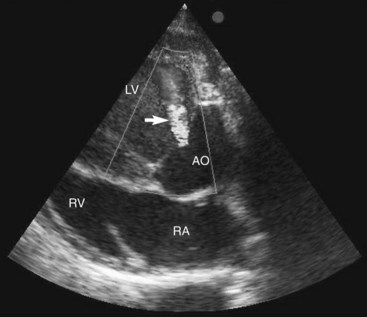Aortic/Pulmonic Regurgitation, Acquired
Basic Information 
Definition
• Aortic regurgitation is common in older horses, and the aortic valve is the most common valve diagnosed with pathologic changes (usually nodular or general fibrous thickening of the valve leaflets).
• Pulmonic regurgitation is extremely rarely diagnosed by auscultation; it seldom results in an audible murmur because the pressure difference between the pulmonary circulation and the right ventricle in diastole is too low to produce significant turbulence that will cause a murmur. In addition, only rarely are clinical signs associated with pulmonic regurgitation in horses. Therefore most pulmonic regurgitation is of no relevance for clinicians unless it is severe or associated with bacterial endocarditis. This entry focuses primarily on aortic regurgitation.
• For both the pulmonic and the aortic valve, mild regurgitation detected by Doppler echocardiography occurs in a high proportion of Standardbred and Thoroughbred racehorses (Figure 1). Training-induced myocardial hypertrophy is the most likely reason for this minor regurgitation.
Clinical Presentation
Physical Exam Findings
• Diastolic cardiac murmur with the point of maximal intensity (PMI) over the aortic valve at the basal area of the left hemithorax: Because the aortic valve is located centrally in the heart, the murmur is often also heard over the right hemithorax and may radiate over the entire thorax. The murmur is often holosystolic or pansystolic with a decrescendo musical quality and is relatively easy to diagnose in these cases. A fenestration or vibrating portion of the leaflet is usually responsible for the musical quality, which is easily heard. However, the murmur may be harsh or blowing, and if the heart sounds are engulfed by the murmur, it may be difficult to differentiate from a systolic murmur. In these cases, simultaneous palpation of the peripheral pulse is helpful. The intensity of the murmur does not always correlate with the severity of the disease.
• Depending on the severity, one or more of the following signs may also be observed:
Stay updated, free articles. Join our Telegram channel

Full access? Get Clinical Tree



